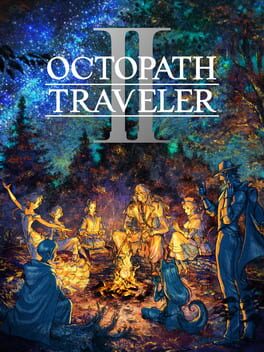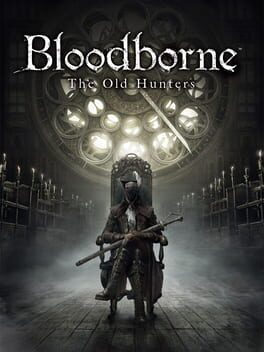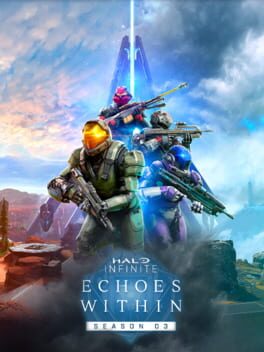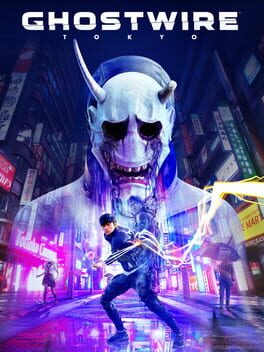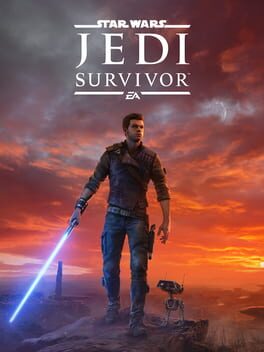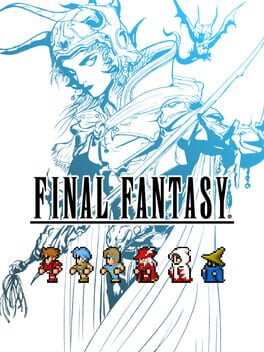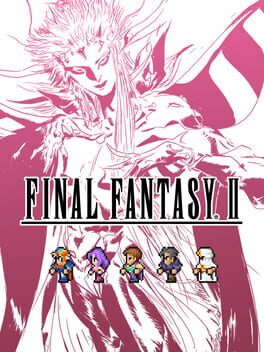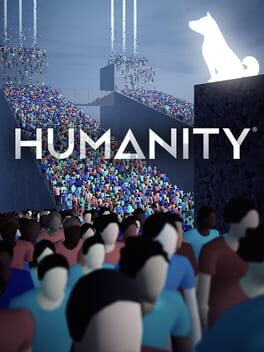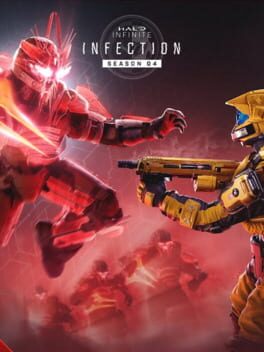ARW3
BACKER
2023
Octopath Traveler II is a wonderful RPG with stunning art direction, a phenomenal ensemble of characters, engaging turn-based combat, fun bosses, a flawless OST, and an overall interesting world to traverse. The 8 travelers stories all come together in a surprising, but satisfying concluding arc that made for a meaningful ending to an overall phenomenal experience. Their stories were varied, but were mostly of excellent quality. Castti, Osvald, and Throné were highlight characters for me personally. "Travel banter" between the characters was appropriately endearing, and by the end it is easy to become invested in the relationships of the cast members as well as their individual personalities. The world of Solistia is unapologetically gorgeous: HD-2D has made a triumphant return in Octopath II, and I can only hope to see it further employed in the future, hopefully with equally intriguing writing accompanying it. The pixel art on display here, including a gargantuan effort to create the game's day/night cycle, is amongst the best you will witness in any video game. The only thing in Octopath Traveler II more stunning than the art direction is the music: it is simply, sublime. Without a shadow of a doubt, this game's OST is one of the best I have ever heard in any video game. It ranges from uplifting to haunting, graceful to chaotic, and I would wager is nearly perfect. For fans of traditional, ensemble-driven turn-based RPGs, Octopath Traveler II is an indubitably easy recommendation.
2015
Performance woes, chalice dungeon grinds and rude mob encounter design aside, it is hard to critique such a masterfully crafted game. Bloodborne's deeply disturbing Victorian atmosphere represents a crowning achievement in world building. FromSoftware's RPG elements shine here and lend themselves to a highly player tailored experience that allows for meaningful builds and proper self-expression. Bloodborne's unique combat, forgoing any traditional "blocking" option, shines thanks to the thoughtful tools provided to players and FromSoftware's impeccable attention to mechanics. As is standard with FS games, the boss encounters are spectacular highlights throughout this experience. It too was engrossing to slowly piece together how each demented looking beast, creature, or disfigured person ties into the game's overall lore. Few games reach such heights in both combat and world design, making Bloodborne a quintessential experience for those up for its challenge.
The Old Hunters is an essential piece of DLC for an already outstanding game. The lore and world-building embedded within this expansive yet non-gratuitous experience is deeply additive to the disturbing propositions of the base game. The boss encounters are top class, representing some of the very best produced for Bloodborne as a whole. The environments are eerie in a way that is intuitively in-line with the base experience, but unique in their own right. Overall, The Old Hunters content represents a top-class expansion that should be experienced by anyone who already finds themselves captivated by Bloodborne's lore or combat.
Halo Infinite continues to make great strides in its multiplayer offerings. Further implementation of Forge has added much needed variety to matchmaking, and the new maps and mode variations are of good quality. The addition of new sandbox items (the bandit rifle and the shroud screen) are welcomed, if not particularly impactful. Season 3 of Infinite finally delivers on the promise of what the game should have always been achieving as a live service product: featuring appropriately timed playlist updates, a good cycling of content, weekly store refreshes, and a steady cadence of free events. Custom game browsing and sharing of custom games have also injected newfound life into Halo Infinite.
However, Season 3 misses the mark in terms of its technical impacts on the game. I have experienced more bugs and technical difficulties in Season 3 than I have at any point since the game's initial launch. Old obnoxious bugs persist, such as the player's AI being reset to BUTLR. However, other more problematic bugs have become more prominent. The most egregious offense, for me, is the frequent, random resetting of controller settings. Multiplayer cinematics play nearly every time one launches the game, and Series X consoles have had a harder time hitting 120 fps consistently since the new season launched.
Overall, Season 3 provides good content and represents a positive direction for the game's Live Service. However, 343i still needs to keep it clean going forward - bugs that greatly diminish QoL must be quashed early, and old promises still need to be delivered on… there has been no mention from 343i on the promised Cross-Core customization, players still await a career progression system, and notable game modes like "Griffball," "Assault," and "Infection" remain absent.
However, Season 3 misses the mark in terms of its technical impacts on the game. I have experienced more bugs and technical difficulties in Season 3 than I have at any point since the game's initial launch. Old obnoxious bugs persist, such as the player's AI being reset to BUTLR. However, other more problematic bugs have become more prominent. The most egregious offense, for me, is the frequent, random resetting of controller settings. Multiplayer cinematics play nearly every time one launches the game, and Series X consoles have had a harder time hitting 120 fps consistently since the new season launched.
Overall, Season 3 provides good content and represents a positive direction for the game's Live Service. However, 343i still needs to keep it clean going forward - bugs that greatly diminish QoL must be quashed early, and old promises still need to be delivered on… there has been no mention from 343i on the promised Cross-Core customization, players still await a career progression system, and notable game modes like "Griffball," "Assault," and "Infection" remain absent.
2022
Ghostwire Tokyo is a good open world jaunt that has memorable atmosphere, stylish combat, and pays great homage to Japanese folklore. Perhaps the biggest flaw of Ghostwire Tokyo is that there is simply "too much" of it. Tokyo's emptiness is haunting and serves the tone of the game, but the copy-pasted open world activities within it reach a point of being laborious, non-contributory bloat. The combat, which is overall very enjoyable, also suffers from "too much" - encounters are dragged out by bullet sponging enemies (especially DLC ones) and long animations. Still, many of the side quests are actually quite interesting. The story too is enjoyable enough, and the overall package is easy to recommend. The Spiders-Thread Update adds an excellent side quest chain in the game (starting with "Fear the Children"). This quest chain was amongst my favorites that Ghostwire offered me, and served as a reminder that although Ghostwire is not a horror game... Tango still can do horror well. The second side quest added is a forgettable collectathon type mission.
Ghostwire Tokyo does not evolve the Ubisoft-style open world formula, however it is a worthy adventure for fans of the genre. The experience is elevated by an intriguing realization of Japanese folklore, a unique premise, and flashy hand-weaving combat.
Ghostwire Tokyo does not evolve the Ubisoft-style open world formula, however it is a worthy adventure for fans of the genre. The experience is elevated by an intriguing realization of Japanese folklore, a unique premise, and flashy hand-weaving combat.
The "Fear the Children" quest-line added to the main campaign of Ghostwire Tokyo is phenomenal. It might just be the best side quest chain in the game, and it also allowed Tango to flex some of their horror-genre roots. The photograph missions added are much more forgettable.
The Spider's Thread Roguelike mode is interesting from what bit I have played, but after 40+ hours with the main game, I need a break from Ghostwire. Perhaps I will return to Spider's Thread in the future.
The Spider's Thread Roguelike mode is interesting from what bit I have played, but after 40+ hours with the main game, I need a break from Ghostwire. Perhaps I will return to Spider's Thread in the future.
Star Wars Jedi: Survivor will go down as one of the finest action-adventure games of recent memory and earns its spot as one of the best AAA Star Wars games. It is filled with heart, joy, sorrow and a resolute respect for the universe it takes place in. Cal Kestis is better fleshed out in this sequel, and the supporting cast are fantastic. As a sequel, Survivor improves upon its predecessor in almost every way. Exploration and level-design are elevated, with worlds that are truly stunning. The combat is refined, rewarding and well realized. The level of customization in this game is truly admirable, from cosmetics to accessibility. This game's greatest flaw, in my eyes, will likely be a transient one. As of the time of this writing, the game does have notable performance issues. On Koboh, the main hub world in which Survivor takes place, performance absolutely chugs in the open world… screen tearing and jarring fluctuations in frame rate hurt the experience but ultimately the game shines through in face of these issues. There is a certain level of swashbuckling adventure to this game, like one might expect from the Uncharted games. However this is accompanied by the Metroidvania-style roots established by Jedi: Fallen Order and a stellar combat system that outshines any prior attempt at depicting the Jedi power fantasy in the gaming medium. Jedi: Survivor is a special game that admirably carries on one of the best Star Wars stories in the past couple decades. Should Respawn pursue a "Star Wars: Jedi" trilogy, the third game will have gargantuan shoes to fill… and I will once again be there to greet it, day one.
2022
Just... really good gaming. I don't have much to add to the already existing GoW: Ragnarök discussion. It is a perfect marriage of sublime, insistently fun combat with meaningful narrative direction. The experience is brought home with stunning depictions of interesting characters, the realization of fantastical world spaces, astound attention to detail and high polish. Although hampered by lulls in the narrative pacing and an annoying travel system brought forward from God of War (2018), Ragnarök is nothing short of a masterpiece.
2021
I quite enjoyed this game! This is the title that started it all for this franchise, and in spite of some aged mechanics, I can see why it is an absolute classic. Although I am visiting from years and years (less than 2000 mind you) after its original 1987 release date... I can see why it was so special for its time. The pixel-remaster refurbishing is admirable, and I think the game can be broached by folks who might not be well acquainted with RPGs should they choose to use the new boost features. This game might be light on deep narrative threads, but the whimsical world of the original Final Fantasy is certainly worth the venture. Although I am new to this beloved game, I am appreciative of its clear influence on many of my favorite games in both my formative years and in the modern day.
2021
I hear from those better versed in the Final Fantasy franchise than I describe FFII as the "black sheep" of the franchise. Now having completed it, I understand where they are coming from, but overall enjoyed the experience. The leveling system, aka the elephant in the room, is indeed obtuse and poorly aged. However, it was in some ways a pioneering system that has bones we can see in modern RPGs' usage-based skill leveling systems. I do not think it would be too far-fetched to suggest that FFII laid down the groundwork for the skill leveling systems we see in the likes of The Elder Scrolls or in Starfield later this year.
While this first attempt at altering the tried and true means of leveling was middling in its reception, FFII distinguished itself from its predecessor in one other notable way. In my eyes, FFII represented a definitive step for the franchise in establishing self-identity. Here, unlike in FFI, there is a larger focus on establishing a character-driven story. It was a first-draft in telling a tale with gravity, featuring an ensemble of differing personalities, with a larger focus on world-building. This fundamental blueprint went on to shape future Final Fantasy stories.
Although surely not the best aging Final Fantasy game, I think FFII probably had more of an impact on future RPGs, including those in the same series, than it is often given credit for.
While this first attempt at altering the tried and true means of leveling was middling in its reception, FFII distinguished itself from its predecessor in one other notable way. In my eyes, FFII represented a definitive step for the franchise in establishing self-identity. Here, unlike in FFI, there is a larger focus on establishing a character-driven story. It was a first-draft in telling a tale with gravity, featuring an ensemble of differing personalities, with a larger focus on world-building. This fundamental blueprint went on to shape future Final Fantasy stories.
Although surely not the best aging Final Fantasy game, I think FFII probably had more of an impact on future RPGs, including those in the same series, than it is often given credit for.
110 hours and 152 shrines later... I finally rolled credits on The Legend of Zelda: Tears of the Kingdom... and it was truly wonderful. The exploration and physics-driven gameplay driving this experience astounded me throughout. There is a certain magic to this game, and the pure joy it invokes, that I am not sure I can conjure into words. Tears of the Kingdom's open world sandbox will be spoken of in reverential tone for many years to come, I suspect. While its predecessor did not quite capture me, a more curated narrative allowed this game to sink its hooks into me much quicker. Within the first few hours you are introduced to the majority of the creative tools the game will give you, and over the next 50-100 hours you're invited to run absolutely wild with your imaginative incorporation of these tools into the gameplay loop. The high level of interactivity that exists between these tools and items or environments in the game world are unrivaled in this game genre. It is exceedingly rare to find a game so capable and competent in its endeavors to surprise and reward creativity. For this reason, in the context of a beautifully crafted open world beaming with personality, I feel the Zelda team has delivered yet another masterpiece.
2023
Humanity was an incredibly unique and interesting puzzle game. The narrative is captivating enough, with some philosophical propositions accompanying this dog's strange journey. Puzzle design is incredible and rewarding in the early goings. Over time, the puzzle appeal waned for me, personally. While the constant introduction of new, clever mechanics are a net positive, I found some of the endgame gimmicks to be a bit tedious or questionably responsive. The sui generis nature of both the music and art direction that I found quite endearing. All and all, an easy recommendation to anyone seeking a fun puzzler or rewarding brain workout
2020
Cute, simple but polished and well realized platformer. Although it was clearly designed to give a crash course orientation to the Dualsense 5 In addition, it does so beautifully and with glee. Astro's Playroom provides a nostalgic trip down PlayStation's Memory Lane. This was a wonderful title to have bundled with the PS5.
2023
Had a nightmare the first night I tried this. Still got a Bulbasaur the next morning, which was kinda neat. Funny idea this game, but it asks for too much time.. the systems are a bit convoluted and the tutorial dialogues drag out. It also kind of gives your phone too much of a workout. As far as sleep tracking accuracy goes? There are better options, albeit less gamified. Also, this game weirdly stipulates that "8.5 hours" is the ideal sleep length for a young adult... and this is needed for maximum "points" on a given night, which is strange. Overall, this is an odd package that would have ironically benefited from being more simple.
This is a pretty awesome season so far. The content cadence has been great, with events and meaningful playlist updates being made quite regularly. Infection made a triumphant return with interesting tweaks to its base mode. New maps, both from Forge creators and 343i have largely been great. "Squad Battle" 8v8 is a resounding success... this is some of the most fun I have had playing Halo Infinite since launch. If you ever wondered if adding Infinite's sandbox to Rat's Nest and Valhalla would be awesome, the answer is "yes." Troublesome bugs have been quashed with this season, including settings resets. However, de-sync remains an issue. Other complaints include the slow rollout of "cross-core" cosmetics, the banshee continuing to feel like a papier-mâché plane (desperately needs a defensive and offensive buff), and missing modes (griffball, assault, etc).
Upon completing the S4 battlepass, I was at the Gold Cadet Grade III Career Rank. The career system is a welcomed addition to Halo Infinite. The custom games browser is also a reliable source of a great time. I aim to continue to play this season, working towards platinum career tier, and am eager to see "Husky Raid" return as 343i promised. The new live service leadership has Halo going in the right direction.
Upon completing the S4 battlepass, I was at the Gold Cadet Grade III Career Rank. The career system is a welcomed addition to Halo Infinite. The custom games browser is also a reliable source of a great time. I aim to continue to play this season, working towards platinum career tier, and am eager to see "Husky Raid" return as 343i promised. The new live service leadership has Halo going in the right direction.
